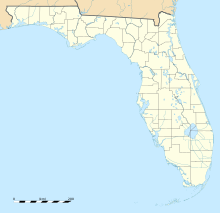Born in Indiana and a dive shop pioneer in California, Mel Fisher was an American treasure hunter best known for finding the 1622 wreck of the Nuestra Señora de Atocha in Florida waters. Diving became a family business. He lost his son and daughter-in-law when their boat capsized and sank in 1975.
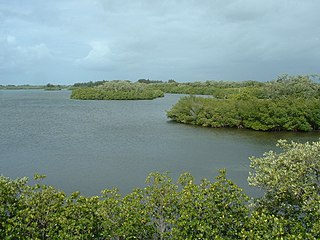
Sebastian Inlet State Park is a Florida state park located 10 miles south of Melbourne Beach and 6 miles north of Vero Beach in Florida. The park lies on both sides of the Sebastian Inlet, which forms the boundary between Brevard and Indian River counties. The land for the park was acquired by the state of Florida in 1971. In 2010, it was the second most visited state park in Florida.

Nuestra Señora de Atocha was a Spanish treasure galleon and the most widely known vessel of a fleet of ships that sank in a hurricane off the Florida Keys in 1622. At the time of her sinking, Nuestra Señora de Atocha was heavily laden with copper, silver, gold, tobacco, gems, and indigo from Spanish ports at Cartagena and Porto Bello in New Granada and Havana, bound for Spain. The Nuestra Señora de Atocha was named for a holy shrine in Madrid, Spain. It was a heavily armed Spanish galleon that served as the almirante for the Spanish fleet. It would trail behind the other ships in the flota to prevent an attack from the rear.
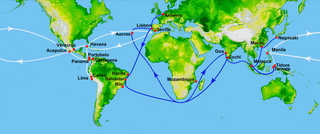
The Spanish treasure fleet, or West Indies Fleet Spanish: Flota de Indias, was a convoy system of sea routes organized by the Spanish Empire from 1566 to 1790, which linked Spain with its territories in the Americas across the Atlantic. The convoys were general purpose cargo fleets used for transporting a wide variety of items, including agricultural goods, lumber, various metal resources such as silver and gold, gems, pearls, spices, sugar, tobacco, silk, and other exotic goods from the overseas territories of the Spanish Empire to the Spanish mainland. Spanish goods such as oil, wine, textiles, books and tools were transported in the opposite direction.

The Treasure Coast is a region of the U.S. state of Florida. It is located on the state's Atlantic coast, comprising Indian River, St. Lucie, and Martin counties. The region, whose name refers to the Spanish Treasure Fleet lost in a 1715 hurricane, evidently emerged from residents' desire to distinguish themselves from Miami and the Gold Coast region to the south.

The maritime history of Florida describes significant past events relating to the U.S. state of Florida in areas concerning shipping, shipwrecks, and military installations and lighthouses constructed to protect or aid navigation and development of the Florida peninsula.

San Pedro Underwater Archaeological Preserve State Park is a Florida State Park located in 18 feet (5.5 m) of water, approximately 1.25 nautical miles (2.32 km) south of Indian Key. It became the second Florida Underwater Archaeological Preserve when it opened to the public in 1989. The heart of the park is the San Pedro, a submerged shipwreck from a 1733 Spanish flotilla, around which visitors can dive and snorkel. The San Pedro, a 287-ton Dutch-built vessel, and 21 other Spanish ships under the command of Rodrigo de Torres left Havana, Cuba, on Friday, July 13, 1733, bound for Spain. The San Pedro carried a cargo of 16,000 silver Mexican pesos and crates of Chinese porcelain. A hurricane struck the fleet, while entering the Straits of Florida, and sank or swamped most of the fleet. The wrecksite includes an "eighteenth century anchor, replica cannons, ballast stones encrusted with coral, a dedication plaque, and a mooring buoy system." The wreck was added to the U.S. National Register of Historic Places on May 31, 2001.
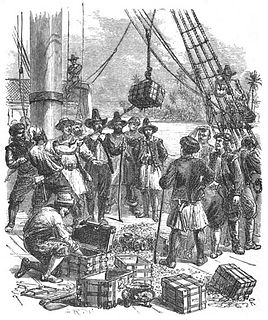
Treasure hunting is the physical search for treasure. For example, treasure hunters try to find sunken shipwrecks and retrieve artifacts with market value. This industry is generally fueled by the market for antiquities. The practice of treasure-hunting can be controversial, as locations such as sunken wrecks or cultural sites may be protected by national or international law concerned with property ownership, marine salvage, sovereign or state vessels, commercial diving regulations, protection of cultural heritage and trade controls.

Urca de Lima is a Spanish shipwreck near Fort Pierce, Florida, United States. She was part of the 1715 Treasure Fleet, herself, one of the numerous Spanish treasure fleets sailing between Spain and its colonies in the Americas. The wreck is located north of Fort Pierce Inlet, 200 yards off the shore from Jack Island Park. It became the first Florida Underwater Archaeological Preserve when dedicated in 1987. This was followed on May 31, 2001 with its addition to the U.S. National Register of Historic Places.

The 1715 Treasure Fleet was a Spanish treasure fleet returning from the New World to Spain. At two in the morning on Wednesday, July 31, 1715, seven days after departing from Havana, Cuba, under the command of Juan Esteban de Ubilla, eleven of the twelve ships of this fleet were lost in a hurricane near present-day Vero Beach, Florida. Because the fleet was carrying silver, it is also known as the 1715 Plate Fleet. Some artifacts and even coins still wash up on Florida beaches from time to time.According to Cuban records around 1,500 sailors perished while a small number survived on lifeboats. Many ships, including pirates, took part in the initial salvage. Initially a privateer, Henry Jennings, was first accused of piracy for attacking such salvage ships and claiming their salvages.
The Santa Margarita was a Spanish ship that sank in a hurricane in the Florida Keys about 40 miles (64 km) west of the island of Key West in 1622.
Henry Jennings was an 18th-century English privateer from the colony of Bermuda, who served primarily during the War of the Spanish Succession and later served as leader of the pirate haven or "republic" of New Providence.

Robert Forrest Burgess is an American author of non-fiction adventure books, as well as sport fishing and scuba diving magazine articles. His photographs illustrate his material.
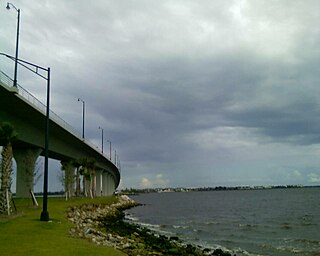
North Hutchinson Island is a coastal barrier island in Indian River and St. Lucie counties on the east coast of Florida in the United States. The island is adjacent to the Atlantic Ocean and is separated from the mainland on the west by the Indian River Lagoon. The portion of the island in Indian River County is known as Orchid Island.

The Survivors' and Salvagers' Camp – 1715 Fleet is a historic site on North Hutchinson Island, Florida. Survivors of the destroyed 1715 Spanish Treasure Fleet established a camp at this location while awaiting rescue. Salvors also used the site as they recovered sunken treasure from the 1715 fleet. Currently, the McLarty Treasure Museum occupies part of the area.

The Atocha Star is a 400-year-old emerald, weighing more than 25.87 carats (5.174 g) before being cut to 12.72 carats (2.544 g). The emerald is estimated to be worth between $3.2 and $5 million (USD). It was part of the treasure on board the ship Nuestra Señora de Atocha, also referred to as the Atocha. The Atocha was the largest Spanish treasure galleon in a fleet of twenty-eight ships bound for Spain which sank along with seven others in a hurricane on September 6, 1622. It sank with the Atocha Star emerald, the highest graded emerald of all Atocha Emeralds.
Brent W. Brisben is an American treasure hunter best known for salvaging the shipwrecks of the historic 1715 Treasure Fleet, a Spanish treasure fleet returning from the New World to Spain. During the early morning hours of July 31, 1715, seven days after departing from Havana, Cuba, eleven of the twelve ships of this fleet were lost in a hurricane near present-day Vero Beach, Florida. Because the fleet was carrying silver, it is also known as the 1715 Plate Fleet. Some artifacts and even coins still wash up on Florida beaches from time to time.
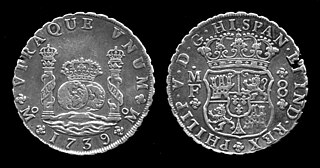
El Salvador alias El Henrique was a Spanish treasure ship that ran aground near present-day Beaufort Inlet, North Carolina during a hurricane in August 1750. She was traveling with six other Spanish merchantmen including the Nuestra Señora De Soledad which went ashore near present-day Core Banks, NC and the Nuestra Señora de Guadalupe which went ashore near present-day Ocracoke, NC.

San José was a 64-gun, three-masted galleon of the Spanish Navy. It was launched in 1698, and sank in battle off the coast of Cartagena, Colombia, in 1708, while laden with gold, silver and emeralds worth about US$17 billion as of 2018.

